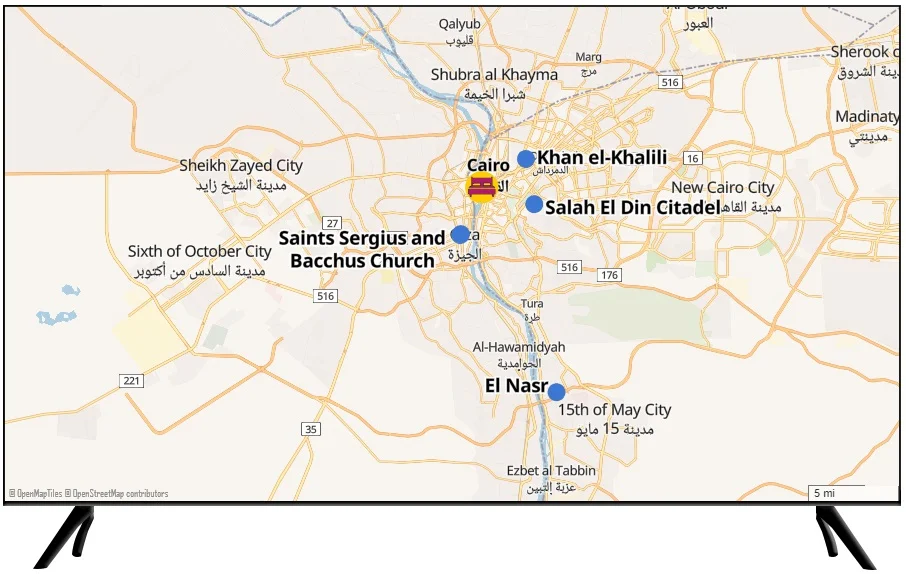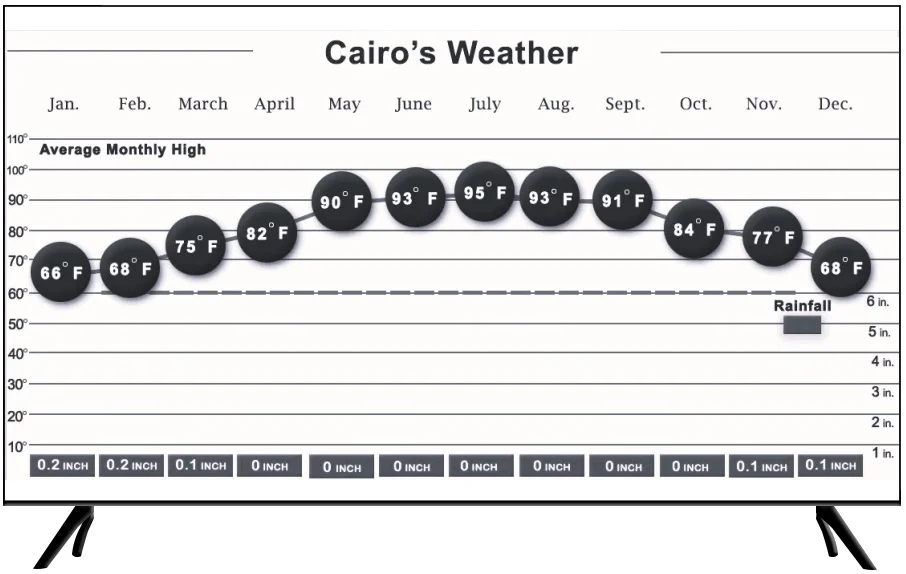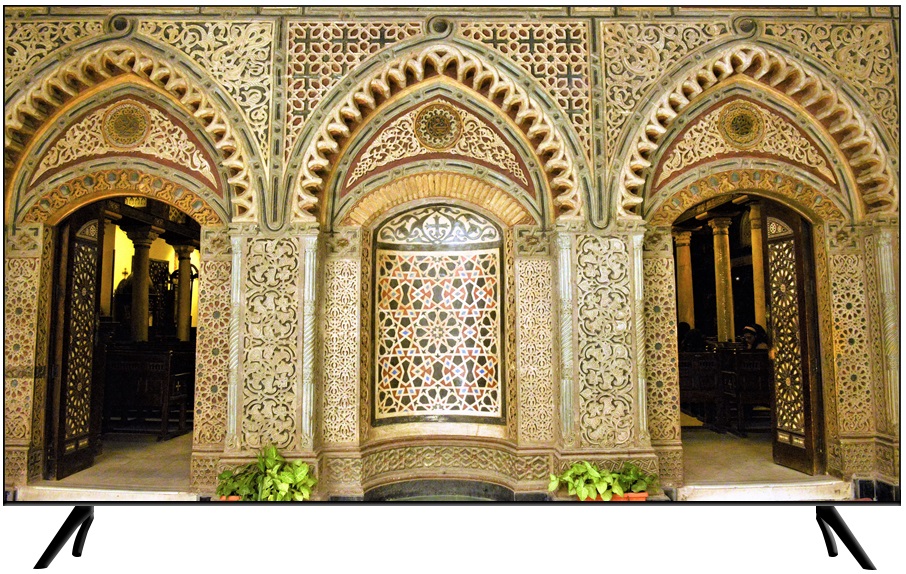


Day 3. Cairo
Overnight – Four Seasons Nile Plaza
Today you will start your exploration of the UNESCO World Heritage Site of Islamic Cairo, also known as Historic Cairo. Although areas that now comprise the metropolis of Cairo are much older than this, Islamic Cairo was founded in the 10th century and has flourished since then in one form or another.
There are impressive mosques and other historic structures, as well as a unique culture and atmosphere that has not changed much over the centuries. Start with an exploration of the Citadel of Salah El-Din, a fortress that houses museums and beautiful gardens, with the most impressive structure being the Alabaster Mosque, or the Mosque of Mohamed Ali. This Citadel was home to Egypt’s rulers from the 12th to the 19th century.
After this you will enter the walls of Islamic Cairo from the Gate of El Nasr (Gate of Victory) and start a fascinating walk through the neighborhoods. Much of your walk will be on Al-Muizz street, which has been Islamic Cairo’s main thoroughfare since the 10th Century. Many of Cairo’s ancient historic attractions are located on this street, and there is unique architecture and culture to be found everywhere you look. There are beautiful mosques, Islamic schools that have existed for many centuries, and ancient souks. Al-Muizz street is often called the largest Islamic open-air museum in the world.
Next is a walk in Cairo’s Old Bazaar, Khan el-Khalili. This souk is always full of tourists and Egyptians and the colors, smells and sounds have to be experienced to be believed. Depending on how much time you spend at each attraction and experience on this day, you will have the option today to break for lunch (authentic local cuisine is recommended and your Egyptologist Tour Director can make suggestions) at a time of your choice, or return to your hotel for a late lunch.
Next up is an exploration of Coptic Cairo. The Coptic Christians built their churches inside the Roman fortress interestingly named Babylon. Egypt was a Christian nation for three centuries between the 3rd and 7th century and the beautiful churches in Old Cairo were built mainly during that period.
Coptic Christians make up between 8 to 15% of Egypt’s population today, depending on the source of information, and their unique culture and architecture is fascinating to observe.
Much of the delight in this short exploration is just walking through the ancient neighborhoods, taking in this unique culture and architecture. Impressive churches you will visit include the famous Hanging Church, parts of which are purported to belong to the 3rd century. Another church will be the 5th century Saints Sergius and Bacchus Church, which was built over the crypt where Mary, Joseph, and the infant Jesus are said to have rested during their journey in Egypt. You will have the opportunity to enter the crypt and view the details, including the tiny alcove where the infant Jesus slept.
Your last stop can be at the Synagogue of Ben Ezra. There has been a house of worship in this location since the 4th century, first a church and then the synagogue. As less than a dozen Jewish people now make Cairo their home, the synagogue and its beautiful interior now serve as a museum.
Today you will start your exploration of the UNESCO World Heritage Site of Islamic Cairo, also known as Historic Cairo. Although areas that now comprise the metropolis of Cairo are much older than this, Islamic Cairo was founded in the 10th century and has flourished since then in one form or another.
There are impressive mosques and other historic structures, as well as a unique culture and atmosphere that has not changed much over the centuries. Start with an exploration of the Citadel of Salah El-Din, a fortress that houses museums and beautiful gardens, with the most impressive structure being the Alabaster Mosque, or the Mosque of Mohamed Ali. This Citadel was home to Egypt’s rulers from the 12th to the 19th century.
After this you will enter the walls of Islamic Cairo from the Gate of El Nasr (Gate of Victory) and start a fascinating walk through the neighborhoods. Much of your walk will be on Al-Muizz street, which has been Islamic Cairo’s main thoroughfare since the 10th Century. Many of Cairo’s ancient historic attractions are located on this street, and there is unique architecture and culture to be found everywhere you look. There are beautiful mosques, Islamic schools that have existed for many centuries, and ancient souks. Al-Muizz street is often called the largest Islamic open-air museum in the world.
Next is a walk in Cairo’s Old Bazaar, Khan el-Khalili. This souk is always full of tourists and Egyptians and the colors, smells and sounds have to be experienced to be believed. Depending on how much time you spend at each attraction and experience on this day, you will have the option today to break for lunch (authentic local cuisine is recommended and your Egyptologist Tour Director can make suggestions) at a time of your choice, or return to your hotel for a late lunch.
Next up is an exploration of Coptic Cairo. The Coptic Christians built their churches inside the Roman fortress interestingly named Babylon. Egypt was a Christian nation for three centuries between the 3rd and 7th century and the beautiful churches in Old Cairo were built mainly during that period.
Coptic Christians make up between 8 to 15% of Egypt’s population today, depending on the source of information, and their unique culture and architecture is fascinating to observe.
Much of the delight in this short exploration is just walking through the ancient neighborhoods, taking in this unique culture and architecture. Impressive churches you will visit include the famous Hanging Church, parts of which are purported to belong to the 3rd century. Another church will be the 5th century Saints Sergius and Bacchus Church, which was built over the crypt where Mary, Joseph, and the infant Jesus are said to have rested during their journey in Egypt. You will have the opportunity to enter the crypt and view the details, including the tiny alcove where the infant Jesus slept.
Your last stop can be at the Synagogue of Ben Ezra. There has been a house of worship in this location since the 4th century, first a church and then the synagogue. As less than a dozen Jewish people now make Cairo their home, the synagogue and its beautiful interior now serve as a museum.

